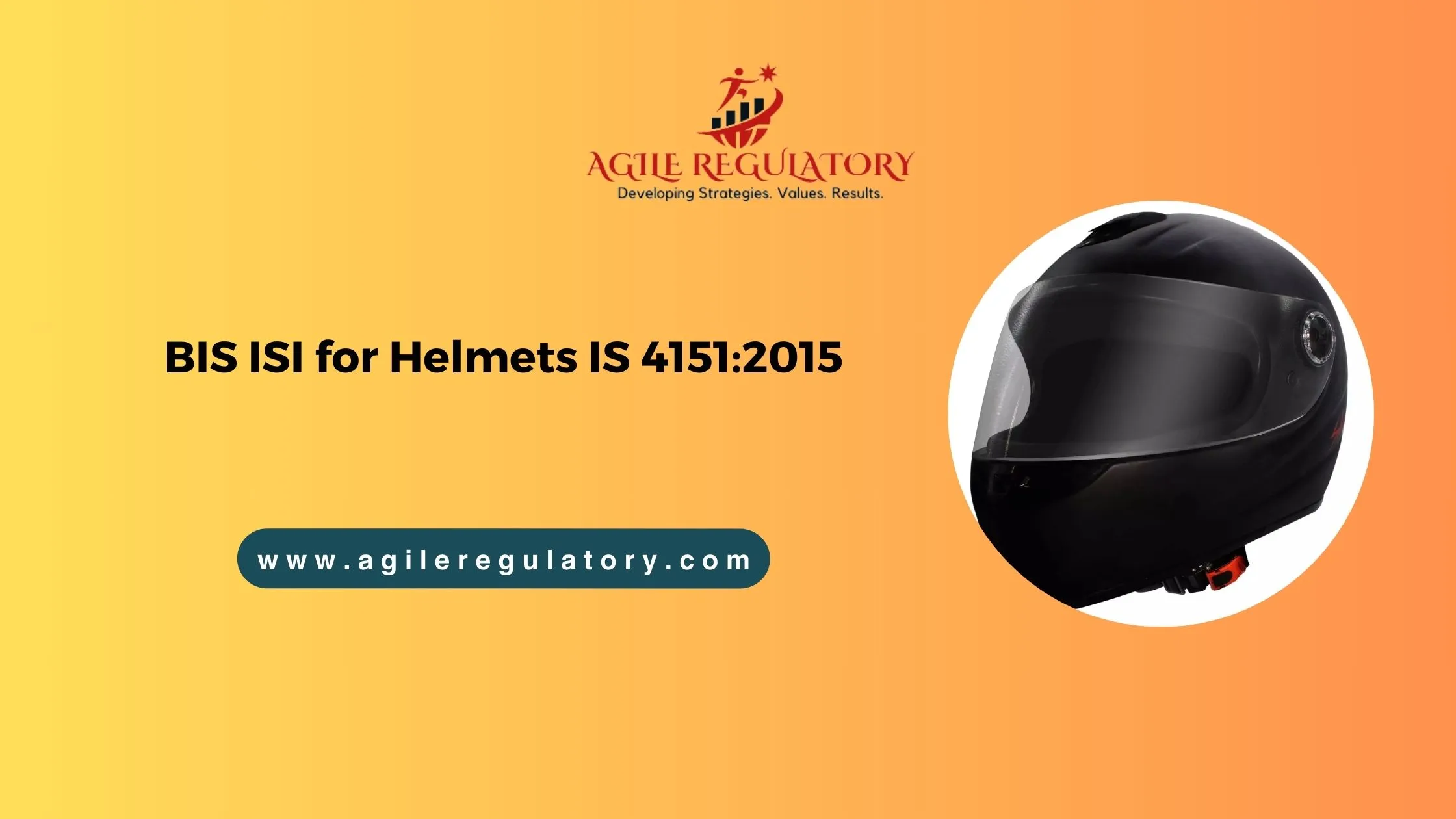
BIS ISI for Helmets IS 4151:2015

Introduction of BIS for Helmets
In India, where two-wheelers are a common and practical form of transportation, road safety is a big problem. Helmets are essential for preserving human life because they lower the possibility of brain damage in collisions. To ensure the quality and safety of helmets, the Bureau of Indian Standards (BIS) has standards for helmet certification. One such standard is IS 4151: 2015, which sets the benchmark for helmets designed for riders of two-wheeler motor vehicles. We will delve into the importance of BIS certification for IS 4151: 2015 helmets in India.
Understanding BIS ISI Certification for Helmets
BIS ISI mark certification is a mark of quality and safety assurance in India. The BIS is a national body that develops and maintains standards for various products and services to ensure quality and safety. For helmets, the BIS has formulated standards to guarantee that helmets meet the necessary criteria for protecting the head effectively during accidents or impacts. Helmets that comply with these standards receive the ISI mark, a symbol of quality, safety, and adherence to these standards.
Why BIS ISI Certification is Mandatory for Helmets?
Safety First: The primary reason for BIS certification is to ensure the safety of riders. Helmets certified under IS 4151: 2015 are rigorously tested for their impact absorption, retention system effectiveness, and other key safety parameters. The certification process assures consumers that the helmet they are purchasing is capable of providing the necessary protection during an accident.
Quality Assurance: BIS certification is a type of quality assurance. Manufacturers are required to strict quality control measures during helmet manufacturing. This includes using materials that meet specific standards and following manufacturing processes that guarantee the helmet's integrity.
Legal Compliance: In India, wearing helmets that conform to the BIS standard is not just a matter of personal safety but also a legal requirement in many states and union territories. Law enforcement agencies can penalize riders who do not wear certified helmets, emphasizing the importance of this certification.
Market Confidence: Helmets certified under IS 4151: 2015 enjoy a higher level of trust and acceptance among consumers. When riders see the BIS certification mark on a helmet, they can be confident that it meets the safety standards and is a legitimate product.
Registration Process of BIS for Helmets
The BIS certification process for helmets is comprehensive and thorough. Manufacturers must adhere to strict guidelines to obtain certification:
Application: Manufacturers submit an application to the BIS for ISI Mark Certification, along with the necessary documentation.
Sample Testing: The helmet samples are subjected to a series of tests. Some tests performed are:
- Testing Heat Resistance.
- Testing Water Absorption.
- Testing Electrical Resistance.
- Testing Flammability Resistance.
- Test for penetration resistance.
- Shock Absorption Test.
- Test for Strength of Chin Strap.
- Testing Corrosion resistance of metal parts.
Factory Inspection: BIS conducts an inspection of the manufacturer's production facilities to ensure compliance with quality control procedures.
Documentation Review: All technical documentation, including material specifications and production processes, is reviewed for compliance with IS 4151: 2015.
Certification Grant: Once the product and manufacturing processes meet the standard's requirements, BIS grants the certification.
Regular Surveillance and Compliance: BIS conducts regular surveillance and market sampling to ensure that products with ISI marks continue to meet the standards. Compliance with the standards must be maintained to retain the license.
Renewal: BIS certification is not a one-time process. It requires periodic renewal to ensure that the product continues to meet the standards. Renewal typically occurs every one or two years.
Displaying ISI Mark: Once you receive the BIS license, you must prominently display the ISI mark on your product and packaging. This mark indicates that your product is certified by BIS.
Market Your Certified Product: Highlight the BIS certification and ISI mark in your marketing and promotional materials. This will instill confidence in consumers and increase the marketability of your product.
Key Criteria of BIS Certification for Helmets
Impact Resistance: Helmets must be able to absorb and dissipate the force of an impact to minimize the risk of head injuries. The ISI mark certification ensures that helmets meet stringent criteria for impact resistance.
Retention System: The strap or retention system should securely hold the helmet on the wearer's head, preventing it from coming off during an accident. Proper certification ensures the strength and reliability of these systems.
Field of Vision: Helmets must provide an unobstructed field of vision to ensure the safety of the wearer, especially while riding a vehicle.
Helmet Weight: Helmets should be lightweight and comfortable, preventing neck fatigue and discomfort during extended use.
Chinstrap Strength: The chinstrap should be strong enough to withstand force, securing the helmet effectively on the wearer's head.
Conclusion
BIS certification for IS 4151: 2015 helmets are a vital aspect of ensuring road safety in India. In addition to offering a legal foundation for helmet quality, it gives customers assurance that the helmets they wear are made to properly protect them. It is our duty as motorcyclists to put safety first, and selecting helmets with BIS certification is an easy but efficient method to do so. In order to make riding safer for all two-wheeler users in the nation, it is also critical that manufacturers understand the value of BIS certification and strive to achieve these strict requirements.
#checkout a detailed process: bis registration
Leave a Reply
Your email address will not be published. Required fields are marked *










